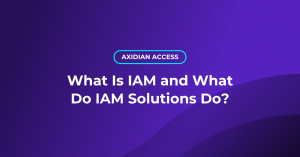If you’ve ever tried to convince your executive team to implement a Privileged Access Management (PAM) system, you’ve likely heard this: “We already have multi-factor authentication. What else do we need?”
To many outside the security team, PAM can seem like an expensive solution to a problem they don’t yet see. Often, it’s viewed as another layer of control, something introduced for compliance rather than performance. Employees may resist it, interpreting PAM as a sign of mistrust.
The real challenge lies in positioning PAM as an operational necessity — something that helps the business function securely, predictably, and with less manual overhead. That starts with how the conversation is framed.
PAM as a Foundation for Resilience, Not Just a Compliance Tool
It’s common for companies to introduce PAM in response to regulatory pressure. But treating it solely as a compliance requirement limits its potential. Strong privileged access controls don’t just satisfy auditors, they support business continuity, protect internal systems, and streamline access across teams.
A well-implemented PAM system ensures that access is managed with clarity and consistency. It allows organizations to scale securely, delegate confidently, and investigate incidents with precision. More than a policy requirement, it becomes a functional part of how work happens built into every critical system, not layered on top of them.
This kind of thinking takes time to build. It requires communication across teams, good internal documentation, and a PAM tool that is intuitive enough to support adoption, not resistance.
What Your Executives Actually Want to Hear
Leadership approval hinges on clarity. To make the case for PAM, you need to connect it directly to business priorities: minimizing risk, increasing operational efficiency, and protecting reputation. Every point you present should show how access control contributes to these outcomes.
Fast Access with Fewer Errors
Privileged users often need access across multiple systems and they need it quickly. A well-designed PAM system makes that process straightforward. For example, Axidian’s Desktop Console allows administrators to manage multiple sessions in a single interface, improving speed and reducing mistakes caused by window switching or fragmented workflows.
Simplified Operations for Admin Teams
IT teams handle hundreds of access-related tasks every month, from approvals to password resets. Manual processes slow things down and increase the risk of misconfiguration. PAM introduces structure — centralized controls, clear policies, automated workflows — making administration more efficient and reliable.
Usable Security That Doesn’t Get in the Way
Security measures often fall apart when they interfere with how people work. PAM avoids this by integrating directly into day-to-day processes. Features like automated password rotation and multi-factor authentication are applied consistently, so teams stay protected while continuing to work at full pace.
Fewer Bottlenecks, More Clarity
Access management tends to become a chokepoint especially when every change requires IT involvement. PAM reduces these delays by enabling more precise delegation of access rights. Teams gain the flexibility to operate effectively, while IT retains full oversight through logs and policy enforcement.
Measurable Risk Reduction
IBM estimates the average cost of a data breach at $4.88 million (2024). PAM limits both the likelihood and the impact of such incidents by restricting lateral movement and ensuring that every privileged session is visible and auditable. Even in the event of credential compromise, access remains contained and controlled.
Confidence in Compliance and Governance
Auditors, customers, and regulators are placing increasing focus on privileged access. A PAM solution gives you the ability to document who had access, when, and what actions they performed. It simplifies reporting, strengthens vendor oversight, and reduces uncertainty in every compliance cycle.
What Happens Without PAM
Even organizations with solid MFA practices and endpoint protection often neglect privileged credentials. These accounts typically have the broadest access and they’re also the most vulnerable.
According to Verizon’s Data Breach Investigations Report, 22% of breaches involve stolen or misused credentials. Once attackers gain access to a privileged account, they can move laterally, elevate privileges, and exfiltrate data without detection.
Password managers are often used to fill the gap. But while convenient, they aren’t designed to enforce policy, control privileged access, or record sessions. That makes them insufficient for protecting high-risk accounts.
Axidian Privilege solves this with a full-featured, policy-driven approach. It handles password management automatically, stores credentials securely, and hides them from users. Access is granted through MFA, and every session is recorded in both text and video. If something goes wrong, IT can immediately investigate or terminate the session in real time.
How to Get Your Executive Team on Board
The strongest technical argument won’t land if it doesn’t match business concerns. Here’s how to build a case that speaks to your leadership’s priorities.
1. Show the exposure.
List every privileged account and explain how they’re currently managed. Highlight shared passwords, unmonitored access, and lack of logging. Use simple visuals or examples to make the problem concrete.
2. Add real-world data.
Use external stats (IBM, Verizon) to frame the broader risk landscape, then link it to your company’s context. Estimate the cost of a breach, system downtime, or audit failure. Help stakeholders visualize what’s at stake.
3. Present operational benefits.
Explain how PAM reduces tickets, shortens audit cycles, and cuts time spent on access approvals. Every hour returned to the business counts as a measurable impact.
4. Suggest a focused pilot.
Start with a high-risk segment: domain admins, VPN access, or external contractors. Use it to gather data on efficiency, incident response, and access clarity. Show change at a small scale.
5. Report business outcomes.
Don’t talk in features — talk in effects. Did audit prep take half the time? Did access errors go down? Did users adopt the system without pushback? Turn these results into arguments for broader rollout.
If you need a platform built with this kind of clarity in mind, explore Axidian Privilege. It’s designed for teams that want real control over privileged access with clean deployment, full visibility, and practical governance built-in.



